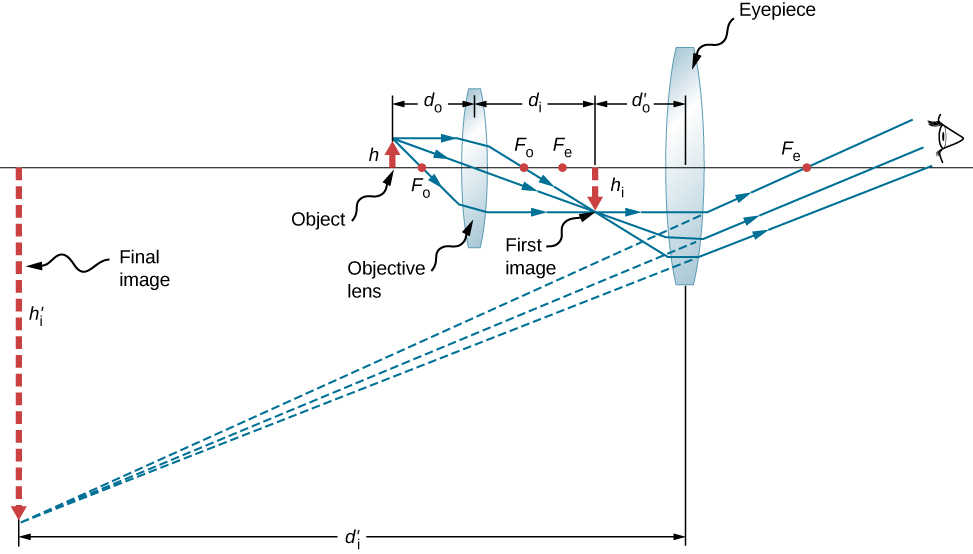| << Chapter < Page | Chapter >> Page > |
The magnification of the microscope is the product of the linear magnification by the objective and the angular magnification by the eyepiece. These are given by
Here, and are the focal lengths of the objective and the eyepiece, respectively. We assume that the final image is formed at the near point of the eye, providing the largest magnification. Note that the angular magnification of the eyepiece is the same as obtained earlier for the simple magnifying glass. This should not be surprising, because the eyepiece is essentially a magnifying glass, and the same physics applies here. The net magnification of the compound microscope is the product of the linear magnification of the objective and the angular magnification of the eyepiece:
Inserting this result into [link] along with the known values and gives

We now calculate the magnifying power of a microscope when the image is at infinity, as shown in [link] , because this makes for the most relaxed viewing. The magnifying power of the microscope is the product of linear magnification of the objective and the angular magnification of the eyepiece. We know that and from the thin-lens equation we obtain
If the final image is at infinity, then the image created by the objective must be located at the focal point of the eyepiece. This may be seen by considering the thin-lens equation with or by recalling that rays that pass through the focal point exit the lens parallel to each other, which is equivalent to focusing at infinity. For many microscopes, the distance between the image-side focal point of the objective and the object-side focal point of the eyepiece is standardized at . This distance is called the tube length of the microscope. From [link] , we see that . Inserting this into [link] gives

Notification Switch
Would you like to follow the 'University physics volume 3' conversation and receive update notifications?